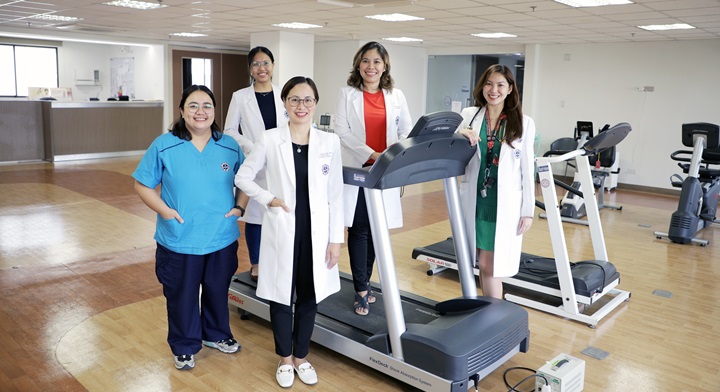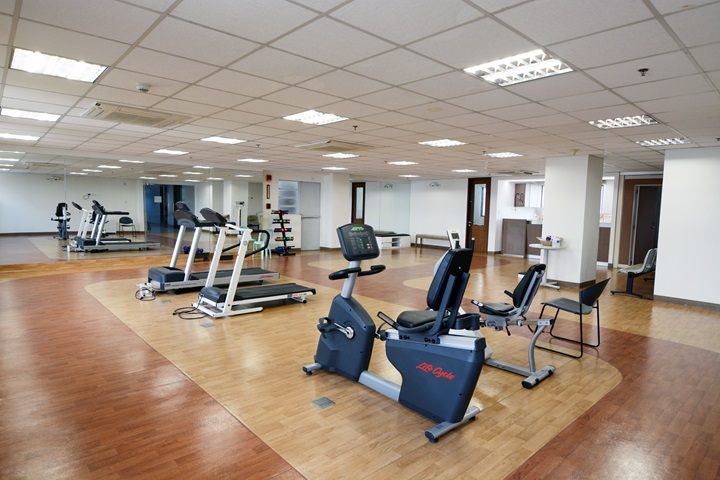
Heart diseases remain to be the biggest threat to Filipinos’ health. According to the World Health Organization (WHO) mortality database, cardiovascular diseases (ischemic heart disease, stroke) is one of the top global causes of death. The Philippine Statistics Authority (PSA) also supports this finding, as their 2023 data also revealed that heart diseases are the leading cause of mortality in the Philippines. Despite these findings, hope is not lost as there is one procedure that can help Filipinos recover from or improve their health after heart disease: Cardiovascular Rehabilitation.
Cardiovascular rehabilitation (also known as cardiac rehabilitation) is a medically-supervised, individually designed program that includes exercise, counseling, and education. Patients who may need cardiovascular rehabilitation include those who have recently suffered a heart attack, those with chest pain or stable angina, and those with chronic heart failure and peripheral artery disease. According to a study involving more than 600,000 people from Brandeis University in Massachusetts, USA, cardiac rehab can cut your risk of subsequent heart attacks within a year by 50 percent. In another study of 1,821 heart attack survivors, 95 percent of those who took cardiac rehab classes were still alive three years later, compared with 46 percent of those who didn’t.
Rehab is also recommended for people who have had surgeries such as coronary artery bypass, valve replacement or repair, and those who have had procedures done like percutaneous coronary intervention and pacemaker insertion. It requires a multi-disciplinary approach in implementing each of the rehab phases. This means that a patient will receive care, information, and guidance from a team of healthcare professionals coming from different specialties. The rehab process will usually involve the patient’s attending physician and a cardiologist specializing in cardiovascular rehabilitation.
In the Philippines, there is still a great need to educate the public about the importance of cardiovascular rehab. Based on 2021 statistics from the Philippine Heart Association (PHA), only 10% to 15% of Filipino patients who have had heart procedures proceed with cardiovascular rehab.
A chance to recover at Manila Doctors Hospital

Cardiovascular rehabilitation is one of Manila Doctors Hospital’s most recent services to open under the Cardiovascular Center. The Preventive Cardiovascular Rehabilitation (PCARE) Unit highlights its active, collaborative method of addressing a cardiovascular patient’s needs to ensure that they recover effectively in a safe and comfortable setting.
Established in 2014, the PCARE Unit began with rehabilitation services for coronary artery disease and heart failure patients, such as those who have had procedures like coronary artery bypass graft and percutaneous coronary intervention. Its new office at the 8th floor of the Norberto Ty Medical Tower inside the MDH complex allowed the unit to expand its services and cater to patients recovering from peripheral arterial disease.
The preventive focus on the unit means it also caters to those who are at risk for heart disease but want to prevent it from happening by taking on an exercise program. By creating a guided program for the individual, PCARE can help stop heart disease at the door and let the patient enjoy a healthier life.
Dr. Michelle Marie Pipo, Chairperson of the PCARE Unit, also envisions PCARE as a center where they can create a “chain of encouragers and hope-finders” who will support each other as they go through their heart recovery journey. She wants MDH’s patients who are struggling with their journey to find their place in PCARE, where they can meet with fellow patients and encourage each other. “PCARE allows you to build healthier habits and find physical activities that you’ll both enjoy and maintain heart-healthy lifestyle. It helps to nurture their hearts and transform their lives”, Pipo added.

